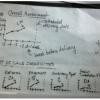 |
Software Project Estimation Tired of guesstimating your estimation process just to create a completion date management will accept? Jonathan Kohl takes the guess work out of estimations by focusing on uncertainties. It may sound counterintuitive, but the idea is to focus on the fact that all projects face unforeseen delays. The rigorous estimation process Jonathan describes here provides your team a way that ensures enough time is scheduled for development and a date for completion management can agree upon.
|
|
|
|
How to Align Your Team with the Scrum Model A successful Scrum implementation requires proper understanding of Scrum processes within team and within all project stakeholders. Even after proper training and certification (CSM/CSPO) it’s really tough to achieve the success as intended. There is one common and important problem which has always been overlooked: the alignment of current team with Scrum the model. Because, vanilla-Scrum only describe what the role does in the process.
|
|
 |
Ready to Ship? On the surface, a Broadway musical, a newspaper, and software may not seem to have much—if anything—in common, but they have one common thread. All are delivered on a fixed schedule. But of the three, software tends to stray the most from the fixed schedule. In this week's column, Jeff Patton says that by focusing on the readiness of the entire product—as done in theatrical performances and when publishing a newspaper—and not just on the completion of the planned bits of work, you can produce software on a fixed schedule that you know is ready to ship.
|
|
|
|
The Roles of the Project Management Office in Scrum Successfully adopting Scrum entails understanding and perhaps adjusting the role of the project management office (PMO), whose workers are often resistant to the lighter-weight process. But, they can become a critical part of agile success. Discover how an agile PMO works.
|
|
|
|
An Overview of Lean-Agile Methods Life used to be simpler. In the early 2000s, if you wanted to go "agile," XP was the route of choice. And then Scrum became popular. And it was not too long before organizations began to hit the limits of these approaches due to their focus on teams. And then it became apparent that lean principles could be applied to software and Lean Software Development and later Kanban were added to the mix. Now, you have a great many choices: Not just about which method to use, but where to start, whether to go top-down or bottom-up, and what should be the scope of your effort.
|
|
|
|
Chartering the Course: Guiding Exploratory Testing Charters help you guide and focus exploratory testing. Well-formed charters help testers find defects that matter and provide vital information to stakeholders about the quality and state of the software under test. Rob Sabourin shares his experiences defining different exploratory testing charters for a diverse group of test projects. For example, reconnaissance charters focus on discovering application features, functions, and capabilities; failure mode charters explore what happens to applications when something goes wrong. In addition, you can base charters on what systems do for users, what users do with systems, or simply the requirements, design, or code. Rob reviews key elements of a well-formed testing charter-its mission, purpose, focus, understanding, and scope. Learn how to evolve a test idea into an exploratory charter using examples from systems testing, Scrum story testing, and developer unit testing.
|
Robert Sabourin, AmiBug.com
|
|
|
Leveraging A Learning Culture Mistakes happen. It's how you respond to them that matters. Teams might react to a bug with panic and blame, leading to a quickly hacked fix and possibly more issues. Taking time to investigate and learn leverages problems into process and practice improvement and a higher quality product.
|
|
|
|
The Marriage of Lean, Scrum and Extreme Programming (XP) Many flavors of Agile have emerged: Scrum, Lean, Feature Driven Development (FDD), and Extreme Programming just to name a few. These methods have numerous complementary and distinguishing features, but the gamut of choices can be confusing and disorienting - as if being told to choose the best from 31 flavors of ice cream. Return on Investment (ROI) is important to me, so Lean must be the answer. But wait, I also want to be agile with my business priorities so I’ll choose Scrum. We are left wanting a simple question answered: “Which Agile method should I choose for my organization?”
|
|
|
|
Using Product Portfolio Management to Improve the Efficiency of Teams Product portfolio management has become an essential discipline for all development organizations that want to achieve enterprise agility. The repeated process of selecting, sizing, and prioritizing the work to be done ensures that their development teams are delivering the most valuable products and enhancements for the business’ clients. This is required for both external clients in the case of product companies and for internal clients in the case of IT organizations. However, the subject of this paper is another, possibly even more important, reason: avoiding the overloading of the organization’s development teams which greatly lowers their efficiency.
|
|
|
|
Agile Developer’s Journal: A Day in the Life People are creatures of habit, particularly programmers: We seek consistency, whether it is the tried-and-true waterfall/SDLC method or our morning routine of reading the newspaper with a hot cup of coffee. Companies or projects looking to adopt an agile process neglect the fundamental concern of an individual developer: "What will my day to day look like working in an agile environment?"
|
|

